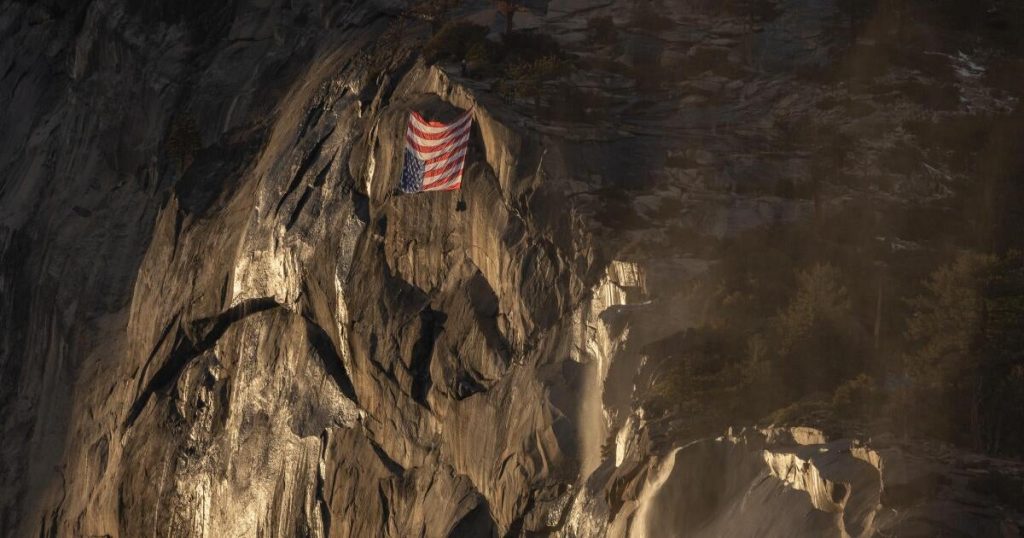Introduction: A Symbol of Distress in Yosemite
In a bold act of protest, an American flag was hung upside down near Horsetail Fall in Yosemite National Park, a site renowned for its natural beauty and attracting numerous visitors. This inverted flag, a universally recognized symbol of distress, was a poignant statement by park employees against the Trump administration’s cuts to the federal workforce. Specifically targeting the National Park Service and U.S. Forest Service, these cuts have sparked concerns not only for the welfare of the environment but also for the preservation of the visitor experience.
The Protest: A Call to Action
The upside-down flag, positioned in an area where nature enthusiasts gather to witness Yosemite’s annual firefall, serves as a powerful symbol of the protesters’ distress. The action aims to highlight the profound impact of workforce reductions and the broader environmental policies under President Trump’s administration, particularly the push for increased drilling and mining on federal lands. The protesters seek to draw attention to the potential ecological damage these policies may inflict and the need for urgent action to protect public lands.
Workers’ Perspectives: Personal Stories of Impact
Behind the protest are the personal stories of workers whose lives and livelihoods have been directly affected by the administration’s decisions. Olek Chmura, a park employee, poignantly shared his experiences, emphasizing the often-overlooked role of maintenance workers in preserving the natural beauty of the parks. Another worker, Brian Gibbs, expressed his deep sorrow in losing his job through an emotional public letter, highlighting the emotional toll of these cuts on dedicated public servants. Their stories illustrate the human cost of policy changes, affecting not only their careers but also their passion for environmental stewardship.
The Administration’s Response: A Mixed Reaction
Following public outcry, the Trump administration has indicated plans to restore at least 50 jobs and hire more seasonal workers. This response, while providing some relief, does not fully address the widespread concerns among park employees and environmental advocates. The administration’s shift in policy may be seen as a step towards mitigating immediate concerns, yet it leaves unresolved the longer-term issues regarding the protection of federal lands and the balance between economic interests and environmental preservation.
Environmental Concerns: The Bigger Picture
The protest underscores a broader anxiety among environmental groups like the Natural Resources Defense Council (NRDC), who fear the administration’s policies could lead to significant harm to public lands and water sources. The push for increased drilling and mining, encapsulated in President Trump’s "drill, baby, drill" mantra, raises significant ecological risks, including potential pollution and loss of biodiversity. These concerns are exacerbated by the reduction in park service jobs, which may impair the ability to manage and protect these crucial areas effectively.
Conclusion: The Significance of a Symbol
The upside-down flag in Yosemite serves as more than a symbolic gesture; it is a call to action, urging policymakers and the public to consider the long-term consequences of current environmental and workforce policies. It stands as a testament to the dedication of park employees and the enduring importance of preserving America’s natural heritage. As debates on environmental protection and federal land use continue, the stories from Yosemite remind us of the human and environmental stakes involved, advocating for a balanced approach that respects both economic needs and ecological preservation.















